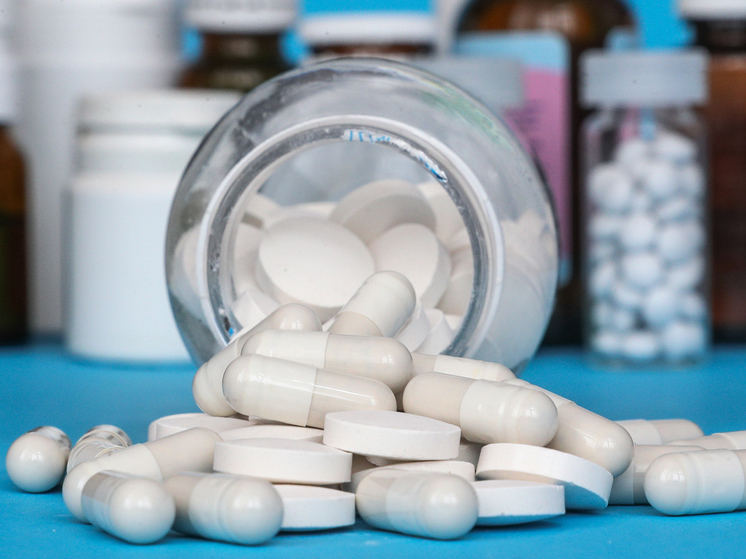The expert spoke about the increasing growth of microbial resistance to antibiotics
[ad_1]

More than a million people worldwide die each year because antibiotics don’t work.
Antibiotic resistance (AR) is one of the most important problems facing modern medicine. During the pandemic, it has become even more relevant – doctors are increasingly confronted not only with multi-, but also with pan-resistant strains of bacteria – that is, microbes that do not kill any of the existing drugs in the world.
However, as it turned out, antibiotic resistance in bacteria could appear long before the development of such drugs. And although the uncontrolled use of antimicrobials makes the problem global, its roots must be sought in history. Sergey Sidorenko, the largest expert in the field of combating antibiotic resistance, chief freelance specialist in clinical microbiology and antimicrobial resistance of the St. Petersburg Health Committee, spoke about this during a meeting of the Scientific Council of the Russian Academy of Sciences “Science of Life”.
In 1929, Alexander Fleming discovered penicillin, but already in 1946 it turned out that 37% of bacteria had lost their sensitivity to it, and in 2009, 96% of microorganisms were already insensitive to penicillin.
Today, more than a million people around the world die each year because antibiotics don’t work. If current trends continue, 12 million people will die by 2050, which will lead to serious economic problems and a decrease in global GBB to 4%.
Sergey Sidorenko calls AR “the devil in the details”: “There is an opinion that if we reduce the consumption of antibiotics through more reasonable prescriptions, then we can significantly reduce the problem of AR. For example, in North America, 15 million antibiotic prescriptions are made a year – and only 48% of them However, our newborns receive 4 (!) times more antibiotics than in North America – and probably 90% of them are unreasonable. “
In recent years, a significant increase in deaths from staphylococcus aureus has been recorded in Russia. Sergey Sidorenko notes that today one of the serious problems is one of the strains of staphylococcus, which is resistant to almost all antibiotics. The ill-fated strain was first described in 1968, however, according to scientists, most likely it appeared back in the 40s of the last century – they just didn’t know about it then. There are several variants of the gene that determines the mechanism of staphylococcus resistance. Recently in northern Europe, local hedgehogs were found to be colonized by staphylococci with this gene. At the same time, to the amazement of scientists, it turned out that these resistant strains were formed back in the 19th century! That is, at a time when no one thought about the medical use of penicillin. Where did they come from?
Scientists continued their research and found that a fungus lives on the skin of hedgehogs, which produces two types of natural antibiotics, including penicillin. “This is about the question of when resistance appears, and when we notice it. Now we are very concerned about the production of enzymes that can break down all types of so-called beta-lactam antibiotics, including the latest generation of carbapenems (a class of antibiotics – Auth). In intensive care units, they add another 15% to the already high mortality rate of 45%. Today, in intensive care units and intensive care units, more than 50% of Klebsiella bacteria are resistant to carbapenems, which, as it were, do not threaten the Russian Federation, as Onishchenko officially stated,” Sidorenko notes. .
In 2016, Chinese scientists first discovered that resistance to polymyxin antibiotics appeared in plasmids (bacterial genomes). The researchers began to understand and found that the first such plasmids appeared in the 1970s, and no one noticed them for decades. But in China in 2016, polymyxins began to be widely used in feed additives. Realizing the danger, the Chinese promptly banned such additives in animal husbandry, but the frequency of positive samples of antibiotic-resistant strains in meat products has not changed since then.
And last year, a girl with a congenital heart defect was born in the city of Grozny. She was brought to one of the metropolitan centers, but the child developed pneumonia, which doctors could not cope with for a long time. As a result of diagnostics, she was found to have bacteria with genes for resistance to carbapenems and polymyxins. Further analyzes revealed plasmids described in China, as well as genes discovered several years ago in a wild bird in the Altai. “How did they unite in Grozny and cause a severe defeat in a child? We only see the tip of the iceberg,” the expert admits.
Sidorenko adds that the formation of microbial resistance can occur even in the course of antibiotic therapy: “Even if all antibiotics are used only as directed, and this is strictly monitored, the formation of AR cannot be stopped. Moreover, we cannot predict the specific mechanism of resistance, since there is a huge number of development trajectories of resistance.”
The expert believes that in order to solve this problem, it is necessary to diversify the development of antibiotics as much as possible and constantly conduct research on new mechanisms of bacterial virulence and resistance.
It remains to add that since 2017, 12 new antibiotics have appeared in the world, 10 of which belong to known classes, which will not solve the problem of AR.
[ad_2]
Source link








